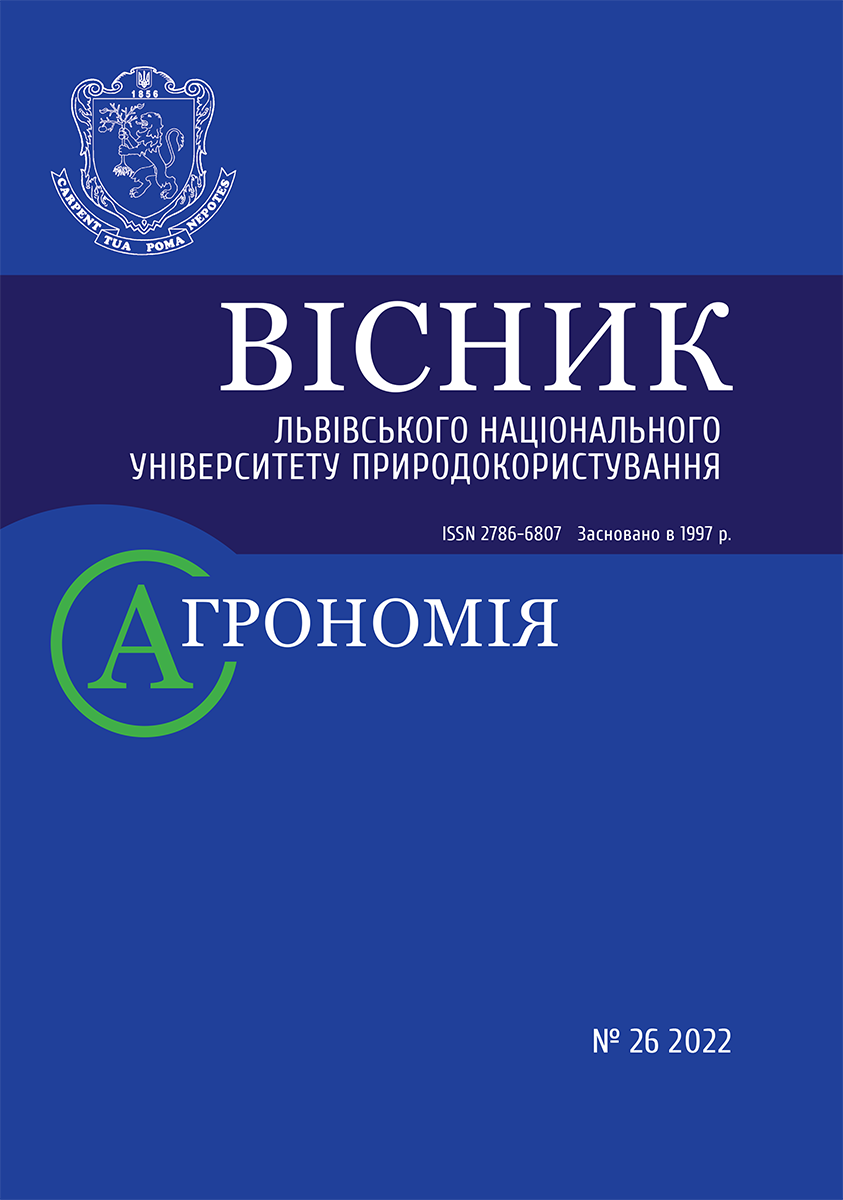HEAT SHOCK PROTEINS AS BIOMARKERS OF FISH POLLUTION
DOI:
https://doi.org/10.31734/agronomy2022.26.045Keywords:
heat shock proteins, HSP60, HSP70, HSC70, dot-blot analysis, scaly carp, biomarkers, heavy metal, leadAbstract
Нeat Shock Proteins (HSP) belong to the natural biomarkers, which are important indicators for animal diseases diagnostics and / or instrument of analyzing the effects on organism of the habitat deteriorating factors. The contamination of water by heavy metals has adverse effect on fish organism. Even in a small quantity, such heavy metal as lead is very dangerous. The analysis of toxic effects of the lead ions on the level of expression of such heat shock proteins as HSP60, HSP70 and HSC70 family in leukocytes, liver, brain and gills of the scaly carp was the main goal of our investigation.
During 96 hours the fish were kept in the aqueous environment of a tank which additionally was supplemented with Pb (CH3COO)2. The control group of fish was maintained for the similar period of time under the same conditions, without lead acetate supplementation.
Concentration of HSP60, HSP70 was determinated by the dot-blot-analysis due to application of monoclonal antibodies against heat shock proteins SAB4501464 (Sigma, USA), [5A5] (ab2787) (Abcam, USA) and [1B5] (ab19136) (Abcam, USA). Detection of immune complexes was performed by using the commercial substrate solution for alkaline phosphatase - CDP-Star (Tropix, UK). Visualization was done by using X-ray film ECL HyperFilm (Amersham, USA) and a kit for films developing (Kodak). The images were processed using the software package GelPro (Version 3.1, USA).
The significant dose-depended increase (p<0,001) in all experimental groups of HSP60 and HSP70 concentrations in leukocytes, liver, gill and brain has been detected, applying dot-blot analysis. At the same time, significant changes in expression of HSC70 protein have not been established. It is the evidence that stress-proteins are the sensitive markers of toxic effects of excessive concentration of lead.
References
An L. H., Lei K., Zheng B. H. Use of heat shock protein mRNA expressions as biomarkers in wild crucian carp for monitoring water quality. Environmental Toxicology and Pharmacology. 2014. No 37 (1). P. 248–255.
Barata С. et al. The relative importance of water and food as cadmium source to Daphnia magna Straus. Aquatic Toxicology. 2002. No 61. P. 143–154.
Boone A. N., Vijayan M. M. Constitutive heat shock protein 70 (HSC70) expression in rainbow trout hepatocytes: effect of heat shock and heavy metal exposure. Comparative Biochemistry and Physiology C: Toxicology and Pharmacology. 2002. No 132 (2). P. 223–233.
Chen S., Brown I. R. Neuronal expression of constitutive heat shock proteins: implications for neurodegenerative diseases. Cell Stress Chaperones. 2007. No 12. P. 51–58.
Deane E. E., Woo N. Y. Impact of heavy metals and organochlorines on hsp70 and hsc70 gene expression in black sea bream fibroblasts. Aquatic Toxicology. 2006. No 79. P. 9–15.
Dzaman-Serafin S. Telatyńska-Mieszek B., Ciechanowski K. Heat shock proteins and their characteristics. Pol Merkur Lekarski. 2005. No 19 (110). P. 215–219.
De Jong L., Moreau X., Jean S., Scher O. & Thiéry A. Expression of the heat shock protein Hsp70 in chloride target cells of mayfly larvae from motorway retention pond: A biomarker of osmotic shock. Science of the Total Environment. 2006. No 366. P. 164–173.
De Jong L., Moreau X., Thiéry A. Expression of heat shock proteins as biomarker tool in aquatic invertebrates: Actual knowledge and ongoing developments for the early detection of environmental changes and ecological risks. Emma Morel and Camille Vincent. Heat-Shock Proteins: New Research. 2008. No 20. P. 375–392.
Efremova S. M. et al. Heat shock protein HSP70 expression and DNA damage in Baikalian sponges exposed to model pollutants and wastewater from Baikalsk Pulp and Paper Plant. Aquat. Toxicol. 2002. No 57. P. 267–280.
Evdonin A., Medvedeva N. The extracellular heat shock protein 70 and its functions. Cytology. 2009. No 51 (2). P. 130–137.
Feder M. E. & Hofmann G. E. Heat-shock proteins, molecular chaperones, and the stress response: evolutionary and ecological physiology. Annual Review of Physiology. 1999. No 61. P. 243–282.
Hartl F. U. Molecular chaperones in the cytosol: from nascent chain to folded protein. Science. 2002. No 295 (5561). P. 1852–1858.
Ito H., Inaguma Y., Kato K. Small heat shock proteins participate in the regulation of cellular aggregates of misfolded protein. Nippon Yakurigaku Zasshi. 2003. No 121. P. 27–32.
Mayer A. B., Hsp70 chaperone: cellular function and molecular mechanism. Cell. Mol. Life Sci. 2005. No 62. P. 670–684.
Oliva-Teles A. Nutrition and health of aquaculture fish. Journal of Fish Diseases. 2012. No 35 (2). P. 83–108.
Sharaf-Eldeen K. Accumulation of a 70 kDa stress protein in the Nile Tilapia, Oreochromis niloticus, and its use as a biomarker of Cu exposure. Egypt. J. Auqat. Biol. & Fish. 2006. No 10 (2). P. 1931.


